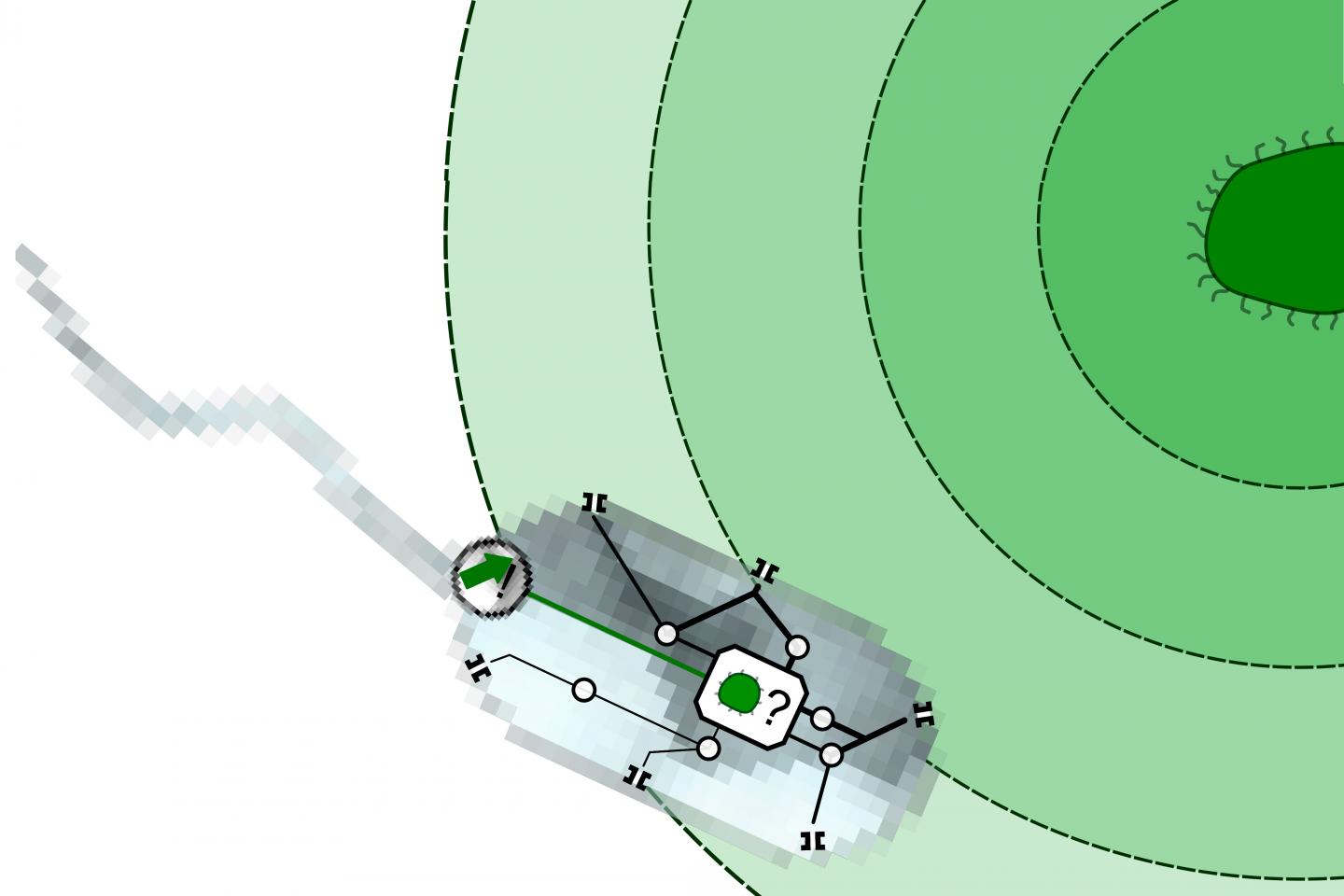Quantum systems are considered extremely fragile. Even the smallest interactions with the environment can result in the loss of sensitive quantum effects. In the renowned journal Science , however, researchers from TU Delft, RWTH Aachen University and Forschungszentrum Jülich now…
Tag: NANOTECHNOLOGY/MICROMACHINES
Novel approaches in treating neurodegenerative disorders
The central nervous system (CNS) is the most vital component of our body, regulating various kinds of daily activities that are essential for our life processes. Keeping the balance between body and brain and maintaining the homeostasis of CNS is…
Engineering matter at the atomic level
As devices continue to be built on an increasingly small scale, scientists are looking toward developing ways to engineer materials at the atomic level. In a breakthrough that will contribute to this, published in Nature Communications , researchers from the…
Odd angles make for strong spin-spin coupling
Rice physicists’ RAMBO reveals magnetic phenomenon useful for quantum simulation and sensing
Innovation pioneers score world first for sustainable construction with graphene concrete
First commercial pour of engineered graphene concrete takes place in UK using Manchester technology
Soft X-ray method promises nanocarrier breakthroughs for smart medicine
PULLMAN, Wash. – Before the huge potential of tiny nanocarriers for highly targeted drug delivery and environmental clean-up can be realized, scientists first need to be able to see them. Currently researchers have to rely on attaching fluorescent dyes or…
NTU Professor’s achievements recognised with ASME’s prestigious medal
Research has seen him scrutinising geckos, bones, and conch shells
Superflimsy graphene turned ultrastiff by optical forging
Stiffened graphene opens up avenues for novel applications
The birth of a subnanometer-sized soccer ball
Video captures the details of a molecule-to-molecule transformation
Implantable piezoelectric polymer improves controlled release of drugs
Repeated tests showed a similar amount of drug release per activation, confirming robust control of release rate
Researchers first synthesize conjoined bismacrocycle with all phenylene units
The research team led by Prof. DU Pingwu from the University of Science and Technology of China (USTC) of the Chinese Academy of Sciences (CAS) first successfully synthesized an all-phenylene bismacrocycle (bis- means two) with Siamese-twin structure and used fullerene…
New optimization approach helps design lighter carbon fiber composite materials
New design approach for manufacturing carbon fibers with optimized orientation and thickness achieves weight reduction in fiber reinforced plastics
NIST, collaborators develop new method to better study microscopic plastics in the ocean
Multistep technique uses small invertebrate to detect, count and characterize nanoplastics
New method of seeing graphene growing using a standard electron microscope
Researchers from the University of Surrey have revealed a new method that enables common laboratory scanning electron microscopes to see graphene growing over a microchip surface in real time. This discovery, published in ACS Applied Nano Materials , could create…
Lehigh Engineering PhD students earn prestigious STEM research fellowships from NSF, DoD
Rossin College PhD students Mari-Therese Burton (materials science and engineering) and Nicole Malofsky (bioengineering) have been selected for prestigious national STEM research fellowships. Malofsky, who is advised by Lesley Chow , an assistant professor of bioengineering and materials science and…
Thin is now in to turn terahertz polarization
Rice lab’s discovery of ‘magic angle’ builds on its ultrathin, highly aligned nanotube films
Opening up possibilities with open-top optofluidic device
Co-planar optoelectrowetting device allows for droplet access from above that increases microfluidic input/output system integration configurations while achieving faster droplet speeds
Out of thick air: Transforming CO2 into light-emitting carbon
Breakthrough by uOttawa researchers sees creation of light-emitting solid carbon from CO2 gas
Terasaki Institute for Biomedical Innovation is awarded grant from the Good Food Institute
Terasaki Institute creates an innovative method to produce cultivated meat
A new form of carbon
Not graphene: researchers in Germany and Finland discover new type of atomically thin carbon material
An illuminating possibility for stroke treatment: Nano-photosynthesis
Blocked blood vessels in the brains of stroke patients prevent oxygen-rich blood from getting to cells, causing severe damage. Plants and some microbes produce oxygen through photosynthesis. What if there was a way to make photosynthesis happen in the brains…
Magnetically propelled cilia power climbing soft robots and microfluidic pumps (video)
The rhythmic motions of hair-like cilia move liquids around cells or propel the cells themselves. In nature, cilia flap independently, and mimicking these movements with artificial materials requires complex mechanisms. Now, researchers reporting in ACS Applied Materials & Interfaces have…
New research may revolutionise cataract treatment
Breakthrough by experts supports drug therapy as alternative to surgery
Silicon chips combine light and ultrasound for better signal processing
The continued growth of wireless and cellular data traffic relies heavily on light waves. Microwave photonics is the field of technology that is dedicated to the distribution and processing of electrical information signals using optical means. Compared with traditional solutions…
Ohio’s Sumit Sharma receives National Science Foundation CAREER award to study metallic nanoparticle
Sumit Sharma, assistant professor of chemical and biomolecular engineering in Ohio University’s Russ College of Engineering and Technology, was recently awarded a National Science Foundation (NSF) Faculty Early Career Development (CAREER) five-year, $511,902 grant to study the adsorption behavior of…
Scientists debut most efficient ‘optical rectennas,’ devices that harvest power from heat
Scientists at the University of Colorado Boulder have tapped into a poltergeist-like property of electrons to design devices that can capture excess heat from their environment–and turn it into usable electricity. The researchers have described their new “optical rectennas” in…
Scientists debut most efficient ‘optical rectennas,’ devices that harvest power from heat
Scientists at the University of Colorado Boulder have tapped into a poltergeist-like property of electrons to design devices that can capture excess heat from their environment–and turn it into usable electricity. The researchers have described their new “optical rectennas” in…
Spintronics: Improving electronics with finer spin control
DGIST scientists have found a novel way to control magnetic spins in a localized space
When one become two: Separating DNA for more accurate nanopore analysis
A new software tool developed by Earlham Institute researchers will help bioinformaticians improve the quality and accuracy of their biological data, and avoid mis-assemblies. The fast, lightweight, user-friendly tool visualises genome assemblies and gene alignments from the latest next generation…
‘Bite’ defects revealed in bottom-up graphene nanoribbons
Graphene nanoribbons (GNRs), narrow strips of single-layer graphene, have interesting physical, electrical, thermal, and optical properties because of the interplay between their crystal and electronic structures. These novel characteristics have pushed them to the forefront in the search for ways…
NUS engineers harvest WiFi signals to power small electronics
Researchers have devised a method, using spin-torque oscillators, to harness wireless signals and convert them into energy to power small electronics
Scientists to take a new step in the microelectronics’ development
Researchers developed a method to determine the electrochemical capacity.
Crystalline supermirrors for trace gas detection in environmental science and medicine
Manufactured in a new process based on crystalline materials, these low-loss mirrors promise to open up completely new application areas, for example in optical respiratory gas analysis for early cancer detection or the detection of greenhouse gases. This work will…
Nanofiber filter captures almost 100% of coronavirus aerosols
The filter could help curb airborne spread of COVID-19 virus

Low temperature physics gives insight into turbulence
A novel technique for studying vortices in quantum fluids has been developed by Lancaster physicists.

Reaching your life goals as a single-celled organism
How is it possible to move in the desired direction without a brain or nervous system? Single-celled organisms apparently manage this feat without any problems: for example, they can swim towards food with the help of small flagellar tails.

Zero to hero: Overlooked material could help reduce our carbon footprint
It is now well known that carbon dioxide is the biggest contributor to climate change and originates primarily from burning of fossil fuels.
New algorithm uses a hologram to control trapped ions
Researchers have discovered the most precise way to control individual ions using holographic optical engineering technology. The new technology uses the first known holographic optical engineering device to control trapped ion qubits. This technology promises to help create more precise…
A sweet solution to hard brain implants
Study uses sugar to make and deliver pudding-like brain implants that reduce foreign body response
Tiny plastic particles in the environment
Nanoplastics — an underestimated problem?
Citrus derivative makes transparent wood 100 percent renewable
Since it was first introduced in 2016, transparent wood has been developed by researchers at KTH Royal Institute of Technology as an innovative structural material for building construction. It lets natural light through and can even store thermal energy. The…
New graphite-based sensor technology for wearable medical devices
Researchers at AMBER, the SFI Centre for Advanced Materials and BioEngineering Research, and from Trinity’s School of Physics, have developed next-generation, graphene-based sensing technology using their innovative G-Putty material. The team’s printed sensors are 50 times more sensitive than the…
UTA researchers combining light waves and nanoparticles to treat battlefield TBIs
New approaches to battlefield brain injuries
A new way to make AR/VR glasses
University of Rochester researchers combine freeform optics and a metasurface to avoid ‘bug eyes’
Intranasal influenza vaccine enhances immune response and offers broad protection, researchers find
ATLANTA–An influenza vaccine that is made of nanoparticles and administered through the nose enhances the body’s immune response to influenza virus infection and offers broad protection against different viral strains, according to researchers in the Institute for Biomedical Sciences at…
Scientists see chemical short-range order in medium-entropy alloy
Chinese scientists have made direct observations in face-centered cubic VCoNi (medium)-entropy alloys (MEA) and for the first time proposed a convincing identification of subnanoscale chemical short-range order (CSRO). This achievement undisputedly resolves the pressing question of if, what and why…
CCNY team makes single photon switch advance
The ability to turn on and off a physical process with just one photon is a fundamental building block for quantum photonic technologies. Realizing this in a chip-scale architecture is important for scalability, which amplifies a breakthrough by City College…
Nature provides inspiration for breakthrough in self-regulating materials
Scientists have long sought to invent materials that can respond to the external world in predictable, self-regulating ways.
Germany grants the Optics University Center and Campus at Leibniz University Hannover
German Science Council recommends an investment of 54.2 million Euro to build the research building OPTICUM
To design truly compostable plastic, scientists take cues from nature
New technology could steer plastics from landfills, oceans — and into your backyard compost bin